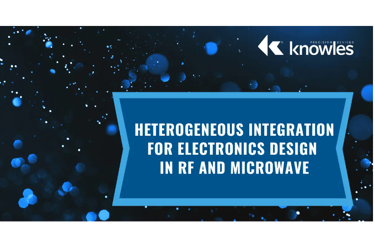Heterogeneous Integration For Electronics Design In RF And Microwave

Heterogeneous integration (HI) refers to the process of combining a set of electronic components with different functions and material compositions into a single, compact system. Particularly in radio frequency (RF) and microwave applications, HI-based designs accommodate higher functional density and better performance when implemented with application-specific requirements in mind. Integrated Passive Devices (IPDs), like conductors, resistors, vias, traces, and bridges, play a significant role in HI because they’re largely responsible for the resulting performance optimization when components combine.
The Role of HI and IPDs in Electronics Design
IPDs in HI-based designs present a world of possibilities when it comes to performance and manufacturing optimization. Here’s what you can expect:
Improved Performance
Integrating different materials and technologies results in performance gains. For example, semiconductor materials like Gallium Arsenide (GaAs), Gallium Nitride (GaN), and Silicon (Si) maximize efficiency and power output when combined in amplifiers, mixers, and oscillators. This combination is uniquely suitable for applications like radar, satellite communications, and 5G networks.
Get unlimited access to:
Enter your credentials below to log in. Not yet a member of RF Globalnet? Subscribe today.
